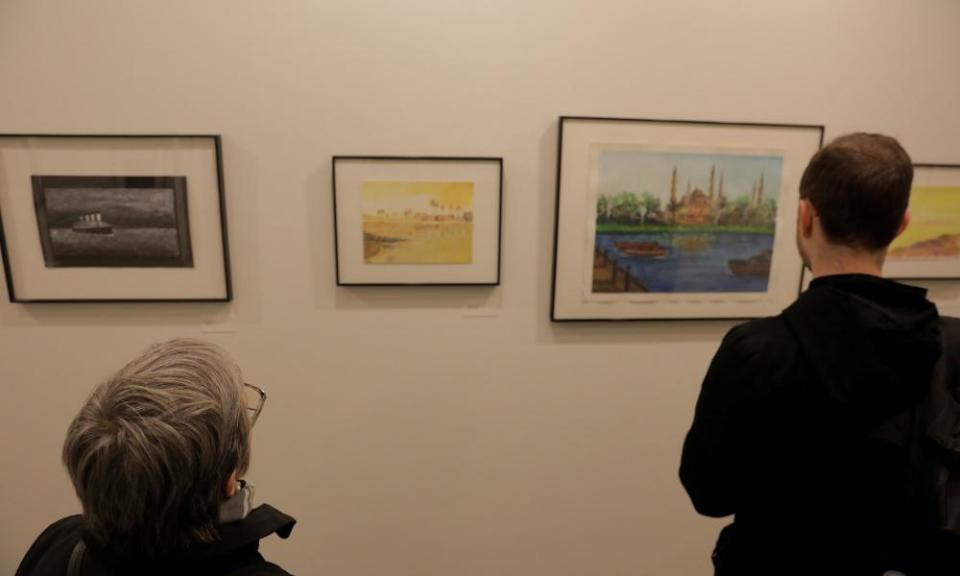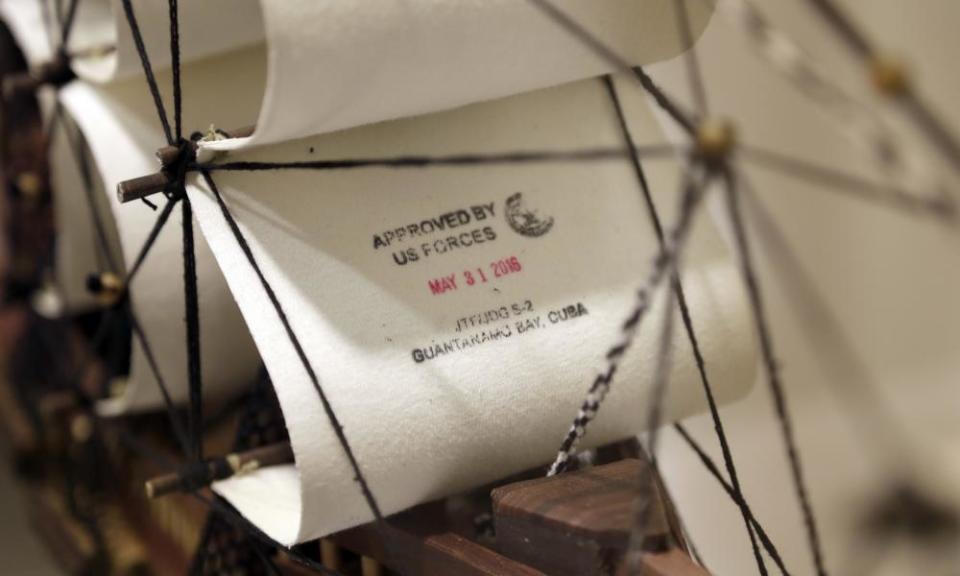Guantánamo art show rattles US military and could prompt confiscation or destruction
Works by detainees are making waves at a New York exhibition – but now officials have taken away finished artworks and won’t let them leave the site

When Moath al-Alwi wants to get his mind out of the US detention center in Guantánamo Bay, where he has been held without charge for almost 16 years, he builds model ships.
“A ship expresses rescue,” he told his lawyer during a recent visit. “Noah was able to rescue people and animals on Earth with a ship. That is why I love to build ships.”
One of his ships, Giant – with a hull of cardboard and rigging made out of T-shirt fibers – is currently on display in an exhibition of work by current and former detainees in New York City.
But another ship he recently finished was seized by camp officials in response to the exhibition, according his lawyer, Beth Jacob. Its fate is unclear.
After the exhibition opened at the John Jay College of Criminal Justice in October, the US Department of Defense announced that it would not only prevent artworks from leaving Guantánamo, but that it would also take inmates’ artwork away from them – and might destroy them.
After finding out that some artworks had been sold, the Pentagon “effectively eliminated transfer of detainee produced artwork from the detention facility”, a spokesman, Maj Ben Sakrisson, told the Guardian via email.
Lawyers for some of the remaining 41 prisoners in Guantánamo say that since the exhibition began, the camp administration has taken away finished artworks from detainees, and that camp officials have not allowed art to exit the facility, which was previously permitted.

This has caused “anguish and concern” among the detainees, some of whom “are manifesting the physical and psychological stress resulting from this new and still-evolving policy”, said Jacob, who has four clients in Guantánamo.
“In prison, you are so deeply connected to your stuff that taking away your artworks is like taking away your children,” said the former detainee Mansoor Adayfi.
While detainees may continue attending weekly art classes, they can only keep a limited number of artworks, which will all be US government property, said Sakrisson.
He did not elaborate on what would happen to removed art, but the Miami Herald reported that artworks may be archived rather than burned.
Jacob said it remained unclear what “archiving” meant and whether the art would ever be seen. “Hiding the artwork is a form of censorship, not far removed from the original statement that it would be destroyed.”
The art program at Guantánamo began in in the later years of George W Bush’s presidency and was promoted by the camp administration. Artworks were given as gifts to lawyers, after being thoroughly checked for secret messages.
Adayfi, who was released in July 2016 after 15 years without charge, remembers that guards would stroll around the cell block admiring how they were decorated.
“Some detainees made their cells beautiful,” he said. “They made trees out of cardboard paper. One detainee would make the most beautiful creations from cardboard and glue. Imagine! We didn’t even have scissors!”
But, he said, policies changed regularly. The most recent change, he said, reminded him of a time in 2013 when guards raided the camp and seized art and other possessions, including family photos and hundreds of handwritten pages of a manuscript he was working on. He never got them back.
“They were targeting our art and destroying it in front of our eyes,” he said. “Those artworks are precious to us because they not only connect you to the world outside – they remind you of who you are. The treatment there was intentionally to suppress your mind and your soul.”

